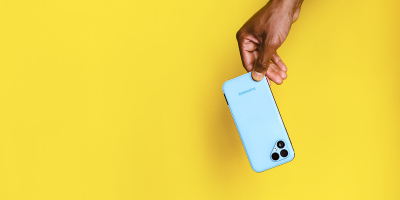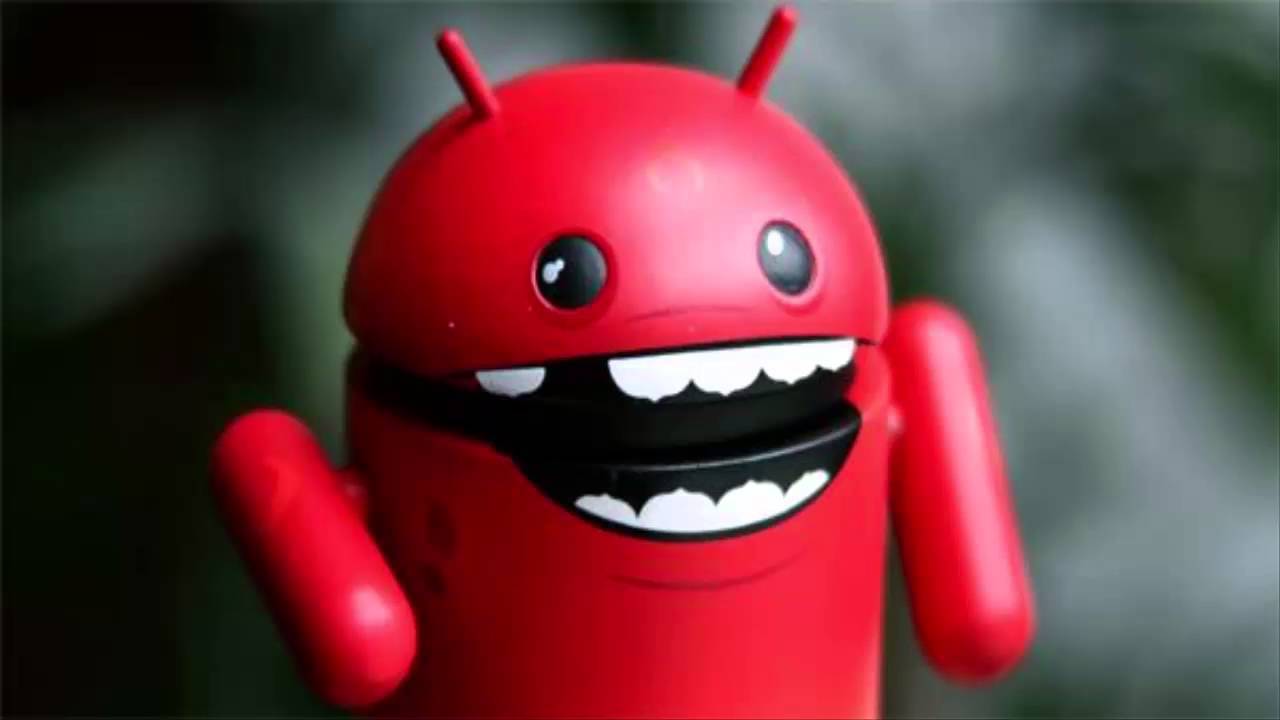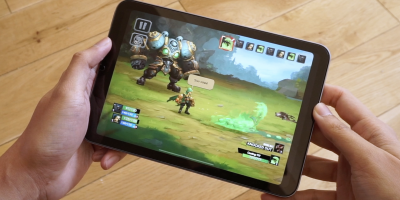
At the Droidcon conference in Berlin this week, an LG spokesperson allegedly stated that Google is expressly disallowing the customization of Android 3.0 Honeycomb because they want the new platform to gain an identity of its own first. (I like that, by the way.) So we have a bit of a problem: either Samsung didn’t get the memo and have violated whatever terms Google supposedly set, or the LG spokesperson is just flat-out lying. Or maybe they dreamt it. Who knows? I hope the spokesperson isn’t met with a pink slip when he returns to his office after his boss finds out Samsung – their homeland competitor – did what they thought they couldn’t. If you haven’t seen what Samsung’s done to Honeycomb be sure to check out our hands-on video. [via The Unwired]











First?
Google needs to make that permanent across Android. Tell companies to figure out a way to customize Android without fubaring it and add to Android source so devices can be updated asap.
And while they are at it, they should switch to a closed source platform and change its name to Android Phone 7. I see where you are coming from but I like it the way it is.
Android Phone 7, I like it.
Being an open platform does not mean you need to let others create havoc for the end users. If they really want to customize the UI then go for it, but don’t call it Android. There is the open source code for them to do whatever they want, but to ride Google’s coat tails and have the latest and greatest Android there should be some guidelines that benefit the end users to provide the best user experience possible. . . just like Google does with the Android market and the requirement to join the open handset alliance ;)
There’s plenty of room for differentiation. From the info I’ve read about Touchwiz 4.0 on Android most if not all of it is just added widgets & apps without changing the UI, and it looks good for a change.
If you put requirements on the specs and tell manufacturers what they can and can’t do to the Android software, then NO that’s not open source. You can’t put requirements on what you can and can’t change in open source. It’s open source, it’s fair game. Your comparison isn’t very well thought out either. The OHA is an organization so of course there are requirements to join. The Android Market only has requirements for the apps you post on there because it’s Google’s private servers that publicize your app to Android users. I don’t see Google stopping anyone from making an app and preventing it from being installed outside of Android Market. Mostly because Android is open source and Android Market is NOT. @AceCurry is right. People like having the different options and maybe the caveat of open source is that you run the risk of company “messing it up” as you like to think. But not everyone wants stock and if you don’t like the UI’s go get yourself a Nexus and leave innovation to the silly companies that don’t know what consumers want, yet push millions of these phones out to customers every year.
Dude – don’t be stupid.
Open source means simply that the source code is open and viewable – it says nothing about the way in which it can be used. Just because android is open source dosn’t mean google couldn’t copyright it or specify requirements for using it. Open source doesn’t even imply that the source code is free. Google could charge for it and it’d still be open source.
Why do manufacturers of phones and tablets need to change the OS to differentitate? HP, Toshiba, Acer, Asus, *everbody* produces laptops that run Windows and are pretty much only different in design, hardware specs and support quality.
Why that isn’t good enough for tablets or phones, I don’t know. Must be an ego thing.
Have you bought a laptop from HP, Dell, or Toshiba recently? They all add a ton of bloatware to the Windows machine in the form of OEM-specific utilities. All three have an “upgrade utility” that manages upgrades for your OEM-specific software in such a horrible way that they make the Apple Update Utility for iTunes/Quicktime look like the best thing ever, complete with its pushing of bloatware, spyware, and crapware (Safari).
Toshiba’s Portege R7xx series adds all these various utilities that allow for controlling of the front-facing camera and managing media, and HP adds a tool the help group icons on the desktop in a manner similar to those found in Blackberry OS and iOS.
Since Windows is proprietary and closed, these OEMs can’t do much in terms of customization, but despite that they still do whatever they can to ensure you use their products and services. Remember the days when OEMs gave you a Windows CD to fresh-restore your system if it failed? Well, now they put that restore on the hard drive itself and it is full of their software bloat – if you want to use the OS, you have to install their bloat or buy your own copy of the expensive-as-hell operating system (if we are talking purely from a legal operating perspective).
The only real way to get away from OEM bloat on Windows machines is to install Ubuntu or something, but then that’s the same as flashing a custom ROM or installing WP7 on an Android device.
The reason OEMs customize the software is to differentiate in something other than specs, a game where there tend to be clear winners (i.e. currently Samsung, Apple, etc due to their ownership of certain manufacturing plants). We won’t ever get away from manufacturer software customizations – we have had to endure their bloat for two decades now – so instead of fighting them maybe we should help them make their utilities more efficient and robust and less intrusive and useless.
HTC Sense isn’t too amazing once its luster fades from using the UI for a week, but it does beat the stock Android UX by far and rivals (and in many cases beats) that of iOS. Instead of saying “HTC is the exception,” we should be saying “Hey, Samsung, this is what is wrong with TouchWiz, this is how we can make it better.” The customizations aren’t going away, so let’s try to make more fierce the competition in that department.
i believe you 100% right or they should alow them to do themes like adw and launcher pro!!!
It is soooo easy! Customation via launcher… for example The TouchWIZ launcher –>only installable on Samsung devices and you can uninstall it if you want vanilla…
No, I agree with wapkaplit, below. Google should set up _all_ Android builds so users can switch between the stock UI and any customized versions. We get freedom of choice while OEMs still have opportunities for differentiation & branding, plus Google creates a new market for independent UI developers. Win-Win-Win.
Interesting….
I wonder which is it? And if Google is disallowing customizing it I like that too. From what I seen Honeycomb needs very lil done to it.
Maybe its is just widgets on the Samsung tablet. Thats not a total custom UI.
Android is Open source and thus that means people like LG or Samsung can do whatever the fuck they want to it as long as they release the source code for the parts that they modified that are part of the AOSP. they can keep their proprietary code still closed. With that said, google can still impose much strong restrictions on getting the w/ Google certification which affords these phones with the Android market and Gapps. I think google needs to do that if they want to be sucessfull. They should enforce times lines for how quickly an update makes it out, how many OS upgrades are promised and the ability to run ALL devices with stock Android if the user desires.
If the phone companies wanna put all their crap and bloatware that is fine but then you dont get market, gmail, google voice, maps, nav, etc.
Lots of “This”
My hope right now is that customizations are sufficiently modular that they don’t change the OS itself–for example making a Samsung homescreen app (like how Launcher Pro is a homescreen replacer app) that can be enabled or disabled. I don’t have a problem with OEMs adding software that they think will add value to their machines–I love Swype on my D2–but they shouldn’t change anything that would fragment the platform.
i like custom ui, i like open source, i like “freedom” for anything. i love u android
At first this sounds like great news… Something I how would extend to the mobile phone arena. But then I read that Google wants Honeycomb to gain an identity of its own “first”. Oh well, it was a nice idea to rein in fragmentation while it lasted…
I hope this is true…. really i do!
Echo……
Why not make OEM’s put in an option for consumers to either use the customized Honeycomb, or vanilla HC. That way the market will decide which way they want to go, and if OEM’s want to get consumers to use their version of HC they will have to get off their arse (ass for those of you who dont know a donkey from from a posterior) and release updates pronto.
I would like to see that. Though I think it would be even better if they could add their UX as addons that you as the user could choose which parts to use or not use. That way you could have vanilla with as many or as few ux toppings as you like lol
Of course those UX addons would be specific to a manufacturer’s device. I think one of the things keeping them from doing it this way is they think hackers will use their UX addons for other devices.
Didn’t Mattias Duarte express in no uncertain terms that it was his hope that with all of his efforts OEMs wouldn’t have to modify the UI, but they are more than willing to if they want? http://www.engadget.com/2011/01/07/exclusive-interview-googles-matias-duarte-talks-honeycomb-tab/
I really think that OEMs(and Journalists for that matter) need to get a grip and realize that Android is not Google’s OS, but *their* OS. It belongs not just to Google, or the OHA, but to anyone. Look at what Cyanogen does. There is nothing stopping these OEMs from doing what he, and his team, does whenever they want. Open Source is Open. Open as in Bar. Take and do what YOU want with it. There really is no need for Motorola to develop their own OS, Google has GIVEN Android to us. Not leased it, not licensed it, not let us borrow it. I’m sick of seeing the term Android Licensee.
Welcome to the free lunch people. Now stop complaining and innovate up in this b!tch.
That is all very true. However, Google doesn’t release the latest version as open source asap. . . from what I understand. This was Nokia’s big issue. Nokia wanted to make a lot of changes to the OS and Google said, that’s fine if you stick to the open source code but you can’t do that with the latest release while it’s still under our control. In other words, Nokia said that they would always be a version behind if they did that.
That’s similar to what some Chinese telco’s have tried–they basically forked Android. . . but no one wants it lol. They want that latest and greatest Google Android and you can’t have that unless you abide by the rules. . . from what I understand.
My guess is maybe they changed the contract for adding “with Google” on the device and what apps come with that. If that’s the case then Samsung may have gone the route of using just the OSS part of Android and adding their own flavor of things to replace the Google closed source apps.
@Davis that’s exactly the way it should be you can do whatever you want with android just please leave the option for vanilla android
I like where Google is heading. They want all Honeycomb devices to update faster or at same time.
From what I remember reading, Samsung’s custom UI is uninstallable. It sounds like Google is allowing that, but not allowing the non-uninstallable custom UIs we’re used to…
I really hope this is true, so Sammy wont put that ugly touch-wiz on tablets
Samsung doesn’t have a UI on top of Honeycomb, it’s a UX. The OS isn’t skinned just a custom set of widgets, from my understanding.
Actually, they have a custom ‘app tray’ and have re-skinned Gapps and menus throughout the OS, Sammy style, along w/ their own custom widgets. They have pretty heavily modified the OS. Although, the tab is said to be shipping w/ stock HC, and the Sammy-fied update will come later.
This was also overheard at CES. Google was saying the first versions of Honeycomb needed to be released without any modification to stabilize the platform.
That´s stupid, everybody speak like you can do nothing with custom UI.
Android fan are too much paranoids and extremist with these things.
Why just don´t use the cellphone and enjoy for it is how normal people,
The ignorance of the author of this article is really quite amazing.
If you follow the links to the original article (even better if you speak German you can read the 1st hand account of the discussion) – the LG spokesperson actually said that the initial batch of Honeycomb devices are not permitted to customise the UI.
The Samung Galaxy Tab will not be released until early summer so… it is not considered an ‘initial batch’.
Just rumor mongering from an ill-informed author. Shame he didn’t spend the time actually researching a little of what he copied